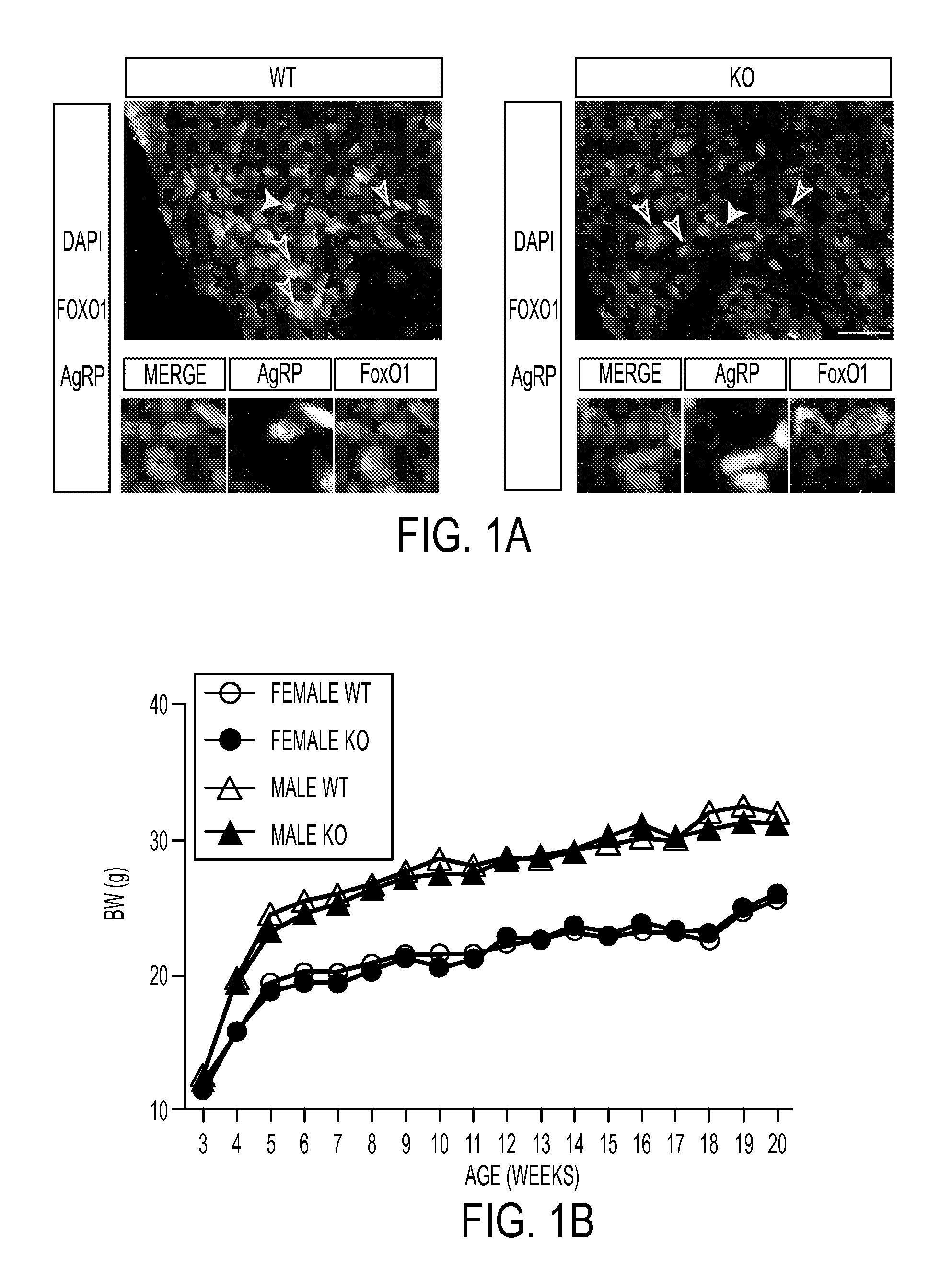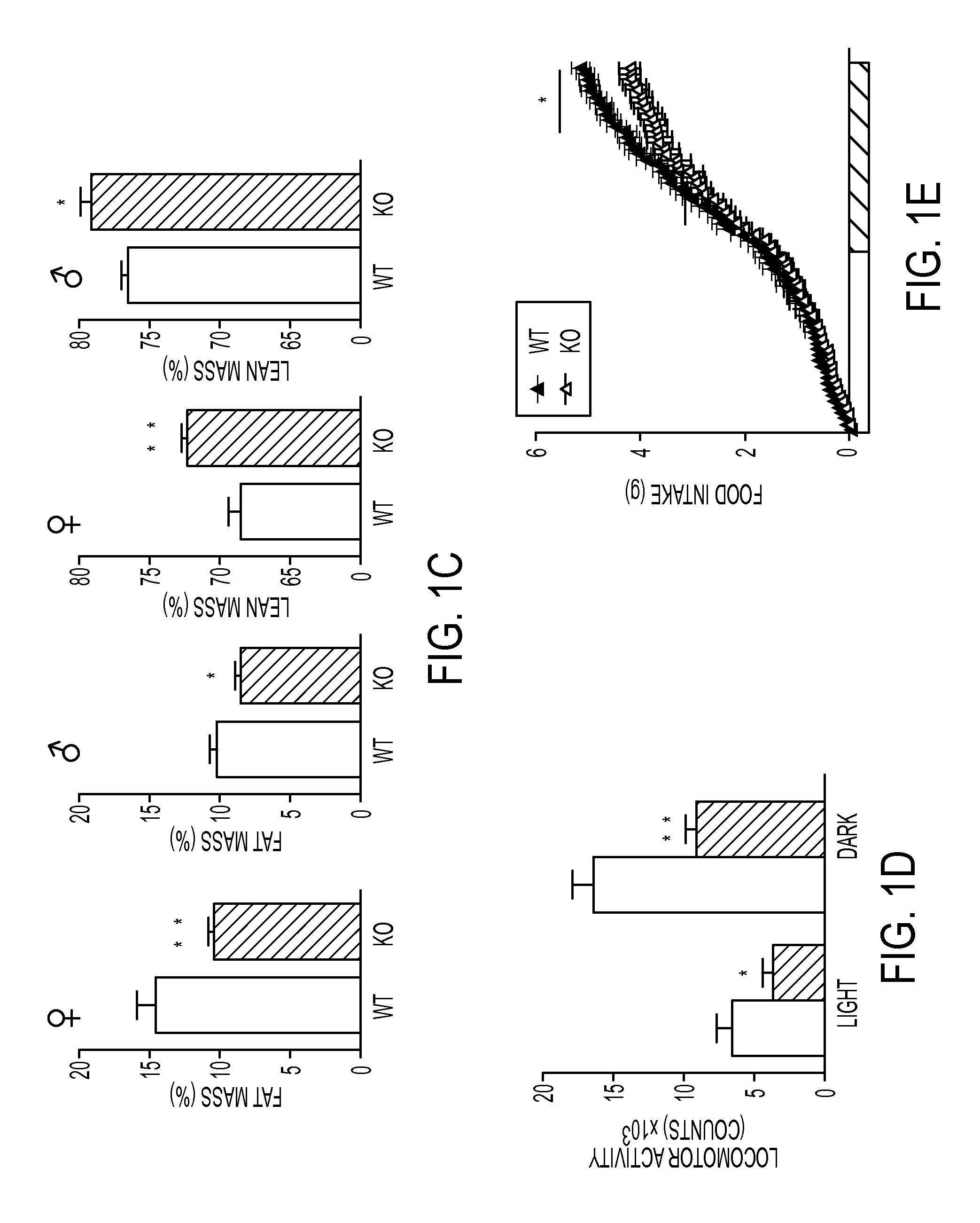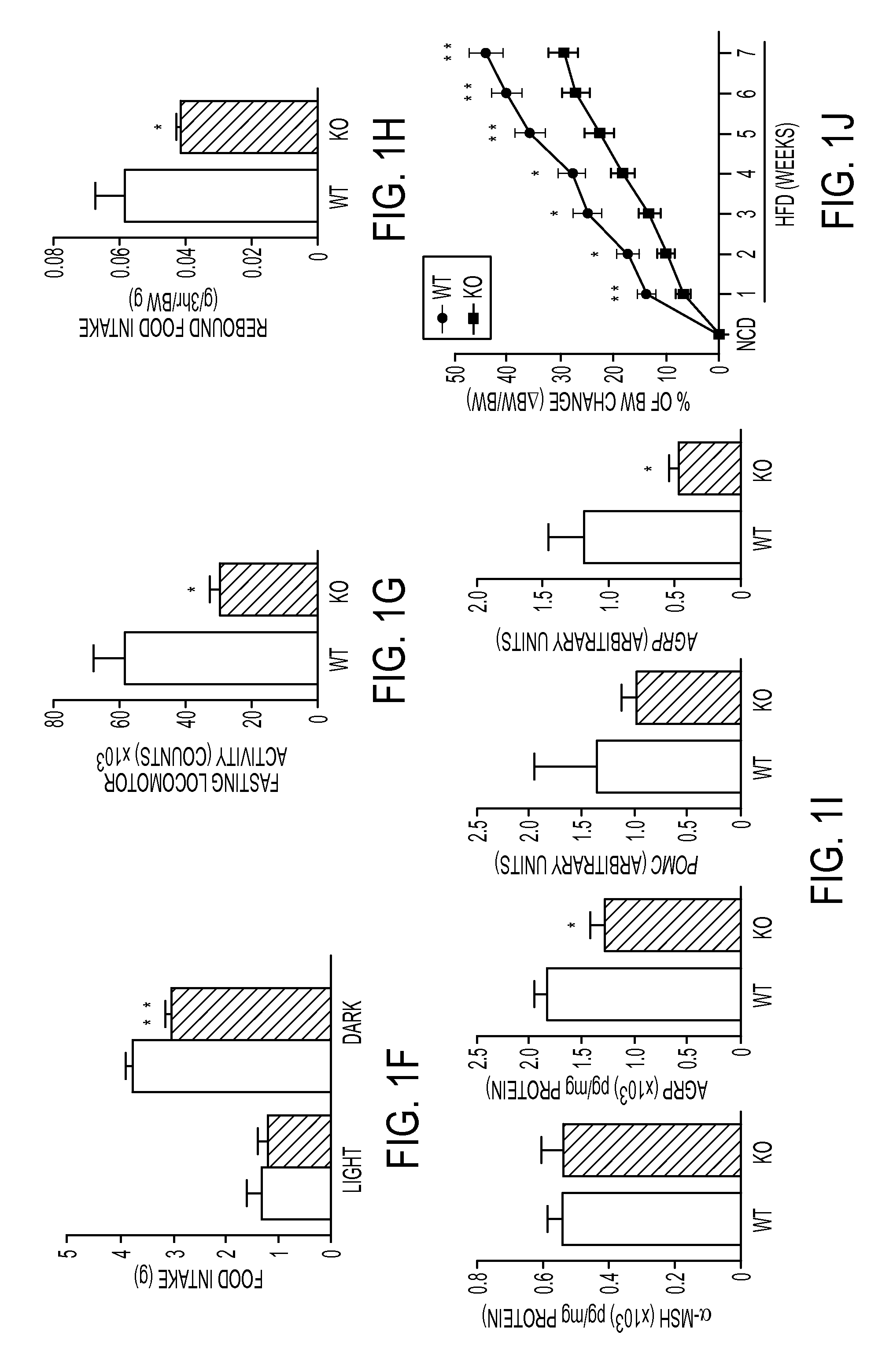G protein-coupled purinergic receptor Gpr17 mediates orexigenic effects of FoxO1 in AgRP neurons
a purinergic receptor and orexigenic effect technology, applied in the direction of elcosanoid active ingredients, drug compositions, metabolic disorders, etc., can solve the problems of affecting the neuronal regulation of glucose homeostasis, increasing food intake, and increasing food intake, so as to improve glucose tolerance and insulin sensitivity, reduce appetite, and treat obesity
- Summary
- Abstract
- Description
- Claims
- Application Information
AI Technical Summary
Benefits of technology
Problems solved by technology
Method used
Image
Examples
example 1
Materials and Methods
[0158]Mice.
[0159]C57BL / 6 and Gt(Rosa)26Sortm9(CAG-tdTomato)Hze mice were from The Jackson Laboratories. The Columbia University Animal Care and Utilization Committee approved all procedures. Normal chow diet (NCD) had 62.1% calories from carbohydrates, 24.6% from protein and 13.2% from fat (PicoLab rodent diet 20, 5053; Purina Mills). Weight and length were measured to calculate body mass index and estimated body composition by nuclear magnetic resonance (Bruker Optics). Agrp-specific FoxO1 knockouts were generated by mating Agrp-Ires-Cre-transgenic mice (Tong et al., 2008) with Foxo1loxP / loxP mice (Paik et al., 2007) and genotyped them as previously described. Analyses Agrp-Foxo1− / − mice that showed somatic recombination owing to stochastic embryonic expression of Agrp-Tres-Cre were excluded.
[0160]Metabolic Analyses.
[0161]Food intake and refeeding response were measured as described (Plum et al., 2009), using a TSE Labmaster Platform (TSE Systems) for indirect ...
example 2
Metabolic Features of Agrp-Foxo1− / − Mice
[0199]Improved Energy Homeostasis in Agrp-Foxo1− / − Mice
[0200]Body weight of female and male Agrp-Foxo1− / − mice was comparable to wild-type controls or trended lower without reaching statistical significance (FIG. 1B). Both female and male Agrp-Foxo1− / − mice showed altered body composition, with a remarkable 18-30% decrease of fat mass and a significant 3-5% increase of lean mass (FIG. 1C).
[0201]Male Mice of Matched Body Weight and Composition were Selected for Calorimetry Studies.
[0202]Respiratory exchanges, energy expenditure and food intake were measured. When fed ad libitum, Agrp-Foxo1− / − mice were comparable to wild-type controls with regard to oxygen consumption (VO2), respiratory quotient (RQ), and energy expenditure (FIG. 8A-C), but showed reduced locomotor activity during light and dark phases of the light cycle (FIG. 1D), as well as reduced cumulative food intake during the 24-h period (FIG. 1E) that was accounted for by reduced intak...
example 3
Characteristics of FoxO1-Deficient AgRP Neurons
[0214]Functional and Gene Expression Analysis of FoxO1-Deficient AgRP Neurons.
[0215]To identify AgRP and Pomc neurons, Agrp-Foxo1− / − mice carrying Npy-Gfp (Agrp-Foxo1− / −; Rosa-tomato; Npy-Gfp) or Pomc-Gfp transgenes (Agrp-Foxo1− / −; Rosa-tomato; Pomc-Gfp) were generated. Foxo1-ablated AgRP neurons expressed Npy-gfp, but not Pomc-gfp (FIG. 5A). Thus, FoxO1-deficient AgRP neurons retained their neuronal identity, thereby excluding developmental defects due to trans-differentiation (Padilla et al., 2010). Next, Agrp-Foxo1− / −; Rosa-tomato; Npy-Gfp mice were used to flow-sort green Npy neurons and red AgRP neurons. FACS analysis demonstrated that 100% of AgRP neurons (labeled by tomato in red) (FIG. 5B) are also Gfp-positive (i.e., they express Npy-Gfp). Having thus validated the FACS approach, mRNA were isolated from AgRP neurons of wild-type (Foxo1loxP / +; Agrp-Cre; Rosa-tomato) and Agrp-Foxo1− / −; Rosa-tomato mice (FIG. 5C) and performed tra...
PUM
| Property | Measurement | Unit |
|---|---|---|
| molar mass | aaaaa | aaaaa |
| pH | aaaaa | aaaaa |
| resistances | aaaaa | aaaaa |
Abstract
Description
Claims
Application Information
 Login to View More
Login to View More - R&D
- Intellectual Property
- Life Sciences
- Materials
- Tech Scout
- Unparalleled Data Quality
- Higher Quality Content
- 60% Fewer Hallucinations
Browse by: Latest US Patents, China's latest patents, Technical Efficacy Thesaurus, Application Domain, Technology Topic, Popular Technical Reports.
© 2025 PatSnap. All rights reserved.Legal|Privacy policy|Modern Slavery Act Transparency Statement|Sitemap|About US| Contact US: help@patsnap.com



